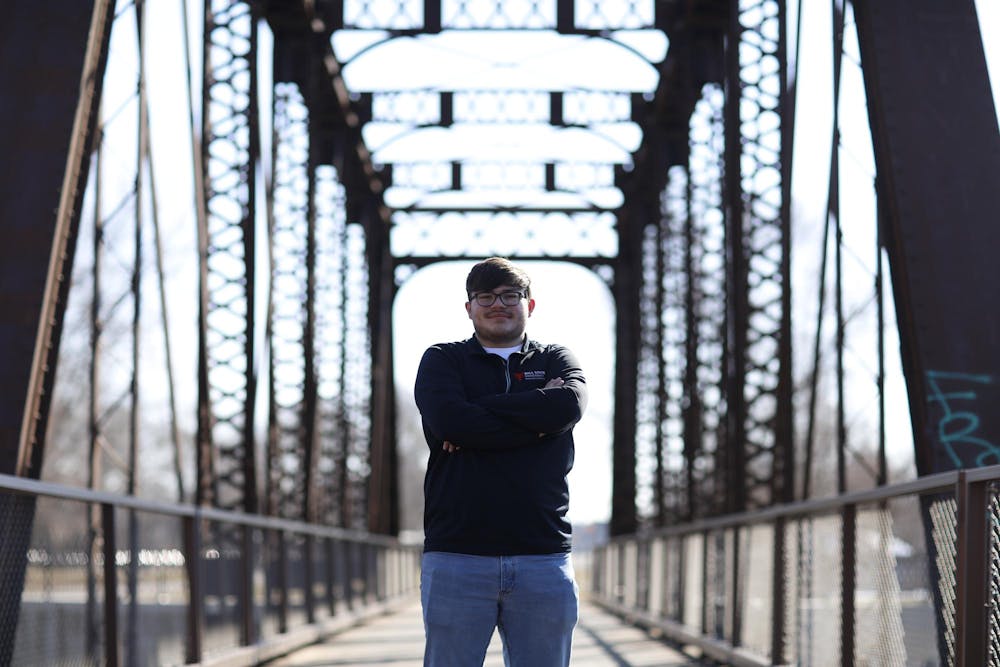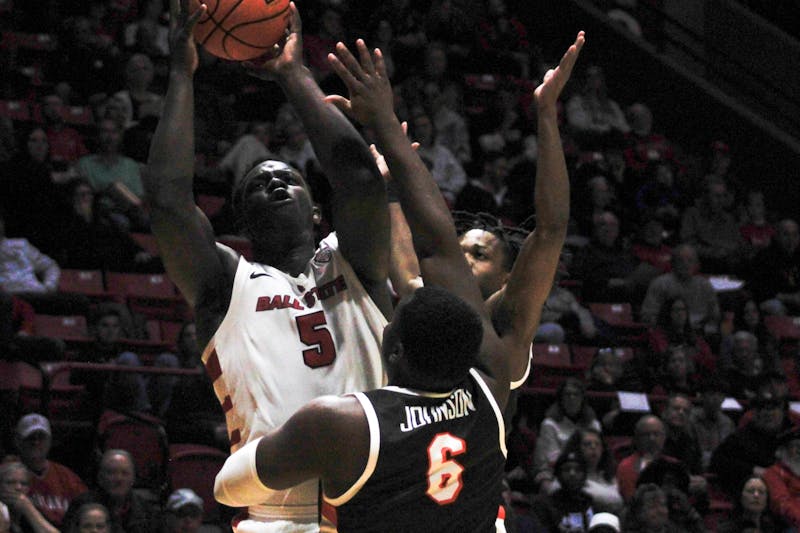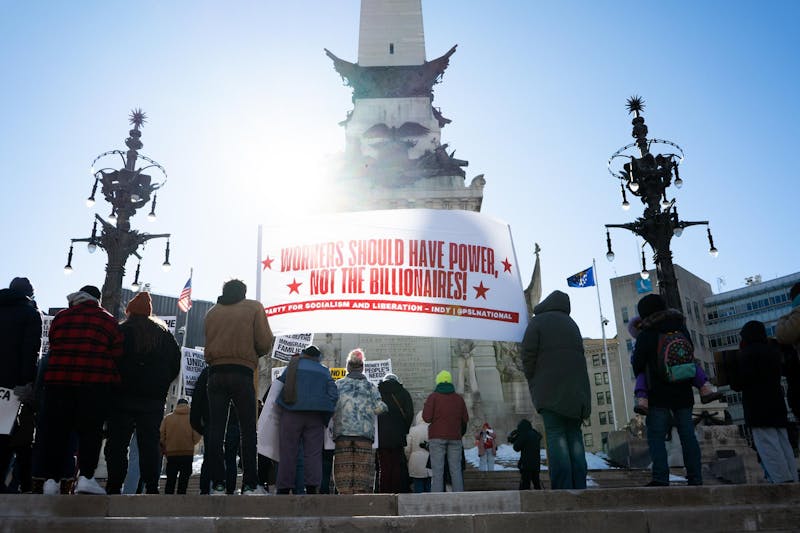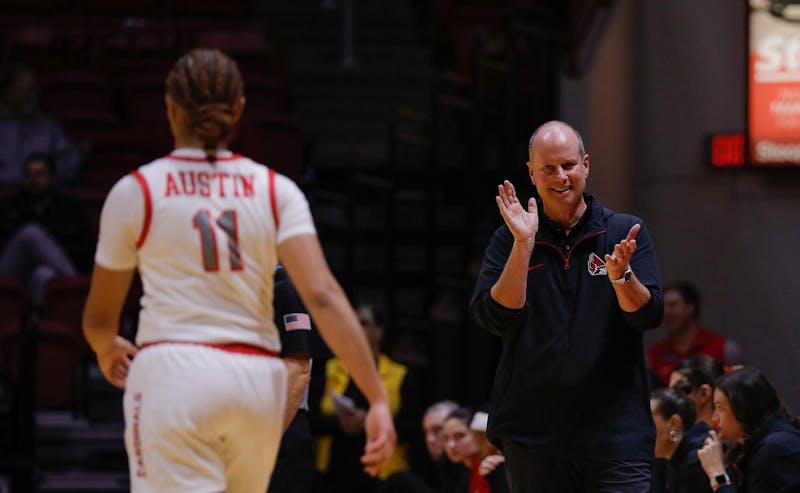The National Trails System stretches more than 88,600 miles across the United States. From the rugged inclines that belt the Appalachian Trail to the sprawling farmlands throughout the Oregon National Historic Trail, the United States is home to numerous scenic, historic and recreational trails, according to the Pacific Crest Trail Association.
While the nearest major U.S. trail to Indiana — the North Country National Scenic Trail — veers around the state, Indiana has become home to its own expanse of nature trails.
According to Conservation Buffers, a “connected trail system offers a more pleasant, safe and continuous recreational experience” than trails that are unconnected from existing trail systems. Regional trails are often developed as the backbone of a trail system to which local trails can connect.
The Cardinal Greenway is the longest regional rail trail in Indiana. It was created from out-of-commission railroad track lines and spans 62 miles from Marion to Richmond, running through Muncie.
The trail didn’t come to fruition until 1993 when Cardinal Greenway, Inc. became an incorporated nonprofit. That same year, the corporation purchased miles of the former railroad corridor which became the trail.
Smaller trails have been proposed and created in the Muncie area, such as the White River Greenway, but few have been able to connect cities in East Central Indiana the way Cardinal Greenway has.
However, a proposal from Ball State University students in the College of Architecture and Planning sought to change that.
Last semester, in a fourth-year studio class on landscape architecture and regional planning, students were tasked with designing a trail network that would link the Ohio and Indiana sides of Union City, as well as connect with other cities in both states. The city has long been divided by the state line which runs through the center of the town. When approaching this project, bridging the gap between each half of Union City was crucial to the design of the regional trail.
Noah Keinath, a fourth-year landscape architecture student at Ball State, was one of the students who designed the rail trail network — named the Crossroads Regional Trail — for Union City. Keinath and his group were one of a few different groups to prototype and present a trail design in the immersive learning course.
“Regional trail design is important,” Keinath said. “[Union City] used to have a pretty storied history, just like the other towns around us: Richmond and Hartford City, even Muncie. But obviously, as time has gone on, some of those railroads have been abandoned, so that connection has been lost. A regional trail system helps with reconnecting.”
Keinath’s group proposed for the trail to run through the center of both cities, with each side holding a unique landmark. The Indiana side of the trail will run under a bell tower while Ohio will house a clock tower.
The Crossroads Regional Trail project, which began in October 2023, has become more than an immersive in-class assignment, Keinath said. While the project was initially hypothetical, the increased interest and action from the Union City community might lead to the trail’s creation.
“I still don’t believe it,” Keinath said. “It’s hard for me, personally, to grasp the impact. I’m here as a fourth-year student … and I’m already playing a part in helping a city grow.”
Chad Spence, mayor of Union City, Indiana, worked closely with students in the immersive program with a goal in mind: to unite Union City on either side of the state line.
“Trail access has become a growing consideration where individuals and families choose to visit or live,” Spence said via email.
The trail would be a “critical component” in linking neighborhoods and parks, encouraging fitness and economic prosperity, as well as highlighting Union City’s “rich history,” Spence said.

A former rail bridge converted into a trail bridge for Cardinal Greenway Feb. 20 in Muncie. The trail's purpose is to connect not only Indiana and Ohio but also local neighborhoods and parks. Andrew Berger, DN
While the trail designs weren’t initially meant to develop beyond the semester-long class, Spence said he could not be more thankful for the effort put in by students to execute an effective regional trail design that bridges the gap of the city.
“Their vision creates a vibrancy that will elevate our community,” Spence said via email.
Fellow fourth-year landscape architecture student Karissa Hall was also involved in the immersive class. Spence greatly supported the project and improved their experiences, Hall said.
“The mayor provided an optimistic, inclusive and open-minded perspective to collaborating with design students,” Hall said via email. “Additionally, the way he spoke of his vision of Union City showcased his passions for establishing a thriving community.”
Hall was part of a separate group from Keinath, one looking to emulate a similar goal with their trail design. She said being able to work in individual groups — while maintaining collaboration with other peers — taught her how to effectively communicate.
Additionally, she said the opportunity to design work for a real-world client, combined with in-studio collaboration, was beneficial in preparing her for the professional world.
“I enjoy being able to impact a community,” Hall said via email. “While in Union City on a site visit, my group had the opportunity to speak with local residents about their desires for local amenities, and it was heartwarming to connect our capabilities to their desires.”
Hanna Haven, a fourth-year landscape architecture student who also participated in the immersion project, felt it was “awesome” to see a project made by architecture students have a chance to be put into place.
For Haven, her experience was impacted by the hands-on aspect of the immersion project, which required her group to travel to different small cities across Indiana and Ohio.
“We didn't know how immensely different the cities were going to be and how big a trail system it was going to be until we actually got out there and looked at these towns,” Haven said. “It definitely gave me in-the-field experience because we haven't had to do something like this before.”
Like Hall, Haven enjoyed the ability to create an impact on a place like Union City. The immersion project also helped her recognize regional trail design as something she wants to do in her future career, Haven said.
“Originally coming in, I was like, ‘I do not want to do large scale,’” Haven said. “But after working with it … it's helped me understand this is definitely what I want to do and what I should do moving forward.”
While the process of creating this regional trail is still in the works, other local trails like Cardinal Greenway provide recreation, transportation and preservation of the natural landscape in cities like Muncie.
For more information on the immersion project and other immersion opportunities, head to the Ball State immersive learning website.
Contact Trinity Rea and Kate Farr with comments at trinity.rea@bsu.edu, kate.farr@bsu.edu, or on X @thetrinityrea.





The Daily News welcomes thoughtful discussion on all of our stories, but please keep comments civil and on-topic. Read our full guidelines here.